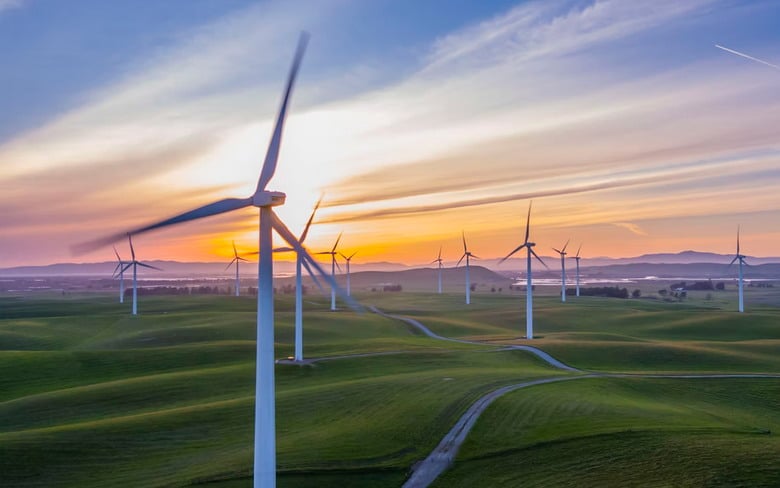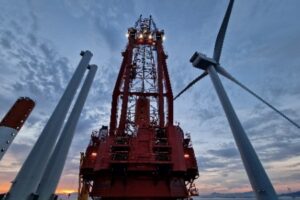The Advantages and Challenges of Sustainable Energy

Wind power has become a major competitor in the search for sustainable energy sources, with a significant growth over the last 30 years – and with recent reports, which say that the U.S. added more new energy capacity from wind than any other source it is becoming even plainer to see.
But what is wind power, why is it dominating the sustainable energy market and what are the challenges to its massive development on our planet?
What is Wind Energy Today?
Wind energy, as the term might suggest, refers to energy derived from the movement of air. More specifically: wind is the result of sunlight produced by the Sun, which heats the Earth’s air levels unevenly. This causes the air levels to move up and down, creating the movement of the air all over the planet
Air that is heated up rises, creating an area of low pressure for colder air to rush into. This rushing effect is what we know today as wind, and actually represents countless trillions of gaseous molecules making up our atmosphere flowing from one place to another at speed.
The movement of air in the atmosphere (the wind) has kinetic energy, as per the first law of thermodynamics, can be transferred – meaning with the right means, we can harness it for our energy needs.
The main way in which we harness energy is via the use of wind turbines, which convert kinetic energy into electrical energy. They do this by employing a rotary blade, which turns when acted upon by wind. The rotation of the turbine is caused by the conversion of the wind’s linear kinetic energy into rotational mechanical energy.
Using a multiplier gearbox takes the rotational energy of the shaft, and transfers it to another, multiplying the RPM of the first in the second by as much as 500 times.
This rapidly rotating second shaft generates an electromagnetic field in a coil around it, resulting in a strong AC current which is then converted to DC by a bridge rectifier, before being sent to a substation and then the grid.
Advantages of Wind Energy
One of the major advantages of harnessing wind power is that it is a near-infinite source of energy, and this means that we can use as a power source for the future.
Has a great potential to generate clean power
The sheer volume of energy contained in the Earth’s Aeolian processes in huge, and turbines does not affect the movement of the air in the atmosphere, even if they use some of it to spin the turbines and produce power.
Is one of the cleanest sources of power
Wind is considered today an energy source that is completely clean.
Fossil fuels generate greenhouse gas emissions when burning, and wind turbines only spin under the action of the wind and they produce power with the help of generators. The entire process does not involve greenhouse gas emissions because the wind used to spin the turbines it then continues its movement through the atmosphere.
The only carbon footprint involved in the capture of wind energy is in the manufacturing process of the turbines, during the transportation and for maintenance.
However, the amount of greenhouse gas emissions produced when we move the turbine from the factory to its place, is overwhelmingly offset by the amount of clean energy produced by the turbines during their life, which in turn reduces the amount of energy produced from fossil fuels across the U.S.
Wind power is one of the fastest growing energy sources in the world
Over the past decade, wind energy production increased by an average of 31% per year, reaching a cumulative capacity of over 743 GW in the world in 2021.
Lately, offshore wind is developing at a fast pace because on the sea, the winds are much stronger, and there are no obstacles to block the natural flow of the wind such as tall trees, tall buildings, hills, mountains, etc.
Offshore wind does not produce sound or visual pollution like onshore wind does.
Has a great potential to reduce the amount of greenhouse gas emissions produced on the planet
Due to the fact that the capacity to generate wind power increases every year on the planet, wind has the potential to offset the amount of greenhouse gas emissions by 14%, saving over $400 billion in avoiding global damage worldwide by 2050.
Challenges of Wind Energy
Despite the advantages of wind as a clean energy source, there are still negative environmental factors to consider when we talk about this renewable source of energy.
Wind turbines affect wildlife
Migratory birds suffer population losses from the installation of wind turbines in their flight path, frequently flying into the blades and getting injured or killed during migrating seasons.
They can produce sound and visual pollution
They also require particularly large areas of land to install them far from human settlements to avoid sound pollution and efficiently harvest energy from the wind.
For some people, the presence of wind turbines close to areas frequented by people, also creates visual pollution because they consider that the turbines are destroying the landscape.
High initial investment
Compared to fossil fuel-fired power plants, a wind power plant with similar capacity requires more financial investment.
However, once installed and connected to the grid, a wind farm will start producing energy day and night without consuming any fossil resources like gas, oil or coal.
The wind farm will only consume the kinetic energy of the wind, which is a renewable resource because once we have the Sun and air in our atmosphere, the wind will always be produced by the sunlight that heats the different layers of air in the atmosphere unevenly.
Conclusion
Producing clean electricity using the renewable resource called wind, will only increase on our planet because mankind is desperate to ditch fossil fuels, and replace them with renewable energy that is inexhaustible and also friendly with the environment.
By developing the technology used to harness the kinetic energy of the wind, the turbines will no longer affect wildlife and will also become more efficient.






